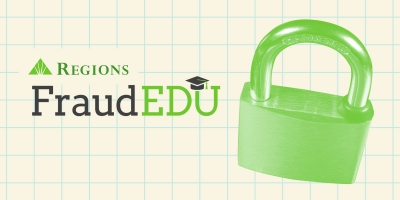
Deepfakes have become a notorious scam, especially with the increasing capabilities of AI technology. It’s genuinely alarming how easily fraudsters can impersonate trusted individuals, businesses, or even family members.
These AI-generated scams can create fake videos and phone calls, sometimes making it hard to distinguish what’s real and what’s not. On top of that, calls may not originate from who they claim to be. Instead, they utilize AI-generated voices that mimic people you know, urging you to make urgent purchases or transfer money.
The technology can effectively replicate someone’s voice and mannerisms, making it incredibly convincing. Scammers can also craft fake emails, leading you to let down your guard and provide personal information during crises.
Regional banks are actively working to raise awareness about these scams. The more people understand the risks, the better equipped they are to protect their finances.
“As criminals get more adept at using deepfakes, the problem is certainly growing, but there’s a glimmer of hope,” noted a local expert in fraud prevention.
He pointed out that protecting your money relies on a basic principle: don’t share personal information over the phone with callers you don’t recognize. If someone calls pretending to be your bank or a family member in distress, asking for sensitive information, it’s wise to be skeptical.
But what if they already have your information? For instance, scammers could reroute calls to their phones with familiar numbers.
He suggested that many families have started developing unique “family passwords” known only to them. This could act as a safeguard, especially if someone you trust suddenly calls asking for money. If they provide the wrong password, it’s a clear sign of a scam.
“If a mother receives a call from someone who sounds like her son, she could ask for that family password to verify their identity,” he explained. “Families taking the initiative to discuss deepfakes are likely to identify fraudulent calls more easily by using an uncommon password.”
Identifying Deepfakes
“Deepfakes are increasingly sophisticated and challenging to detect,” said an expert in consumer education. “The FBI and the American Bankers Association have provided useful guidelines for recognizing the signs of these scams.”
When assessing the authenticity of a video or audio, consider the following:
- Are any facial features blurred or distorted?
- Does the person blink appropriately?
- Do the hair and teeth appear realistic?
- Is the audio out of sync with the video?
- Do the voices sound flat or unnatural?
- Are there unusual shadows or lighting discrepancies?
The Surge in Scams
Fraud, particularly through AI, has skyrocketed. Since 2020, the FBI has recorded over 4.2 million fraud cases, totaling losses of around $55.5 billion.
Key warning signs for deepfake scams include:
- Emotional manipulation, often inciting fear or urgency.
- Unexpected requests for money, passwords, or personal information.
- Messages or calls from known individuals that seem out of character.
Safety Recommendations
- Pause and assess. Is someone pressuring you to send money or sensitive information?
- Verify information. Use trusted contacts and websites to check claims before acting.
- Establish a codeword. Agree on identifiers with family and friends to confirm identities.
- Limit your digital footprint. Be aware that your online presence can be used to train deepfake models.
- Think before sharing. Always verify the source before reposting anything.
Reporting Fraud
If you believe you’ve been targeted, take the following steps:
- File a report with the FBI at ic3.gov.
- If money was transferred, contact your bank immediately.
- Reach out to local authorities.
“Implementing proper controls is vital,” added the local expert. “It’s essential to pause, validate, and ensure authenticity before responding.”
Taking that extra moment can really help prevent falling for scams. ”
The above information is general and should not be taken as legal, financial, or tax advice. Consumers must remain vigilant against fraud and take action to secure their systems. Continuous evaluation of practices is necessary as threats evolve. No system can guarantee complete prevention of fraud or its associated losses; for further assistance, consult your bank.







